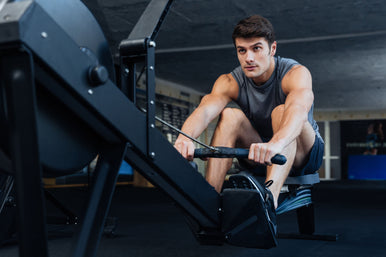

You've probably heard the hype surrounding yoga, but maybe you have not yet experienced it for yourself. Yoga comes with a lot of stereotypes- thin, blonde women sitting in the lotus position. This can make it seem inaccessible, exclusive, and rather mysterious.
But, in reality, yoga really is for everybody. Despite being a traditional and ancient practice, the science has spoken, and yoga really works. It reduces chronic stress scores, improves heart rate variability, helps to prevent arthritis and much more.
There are so many different types of yoga and styles of teaching that it is often just a case of trial and error. Yoga can help you whether you are looking to relax, tone up, gain flexibility, or just sleep better. It is a great complementary practice whatever exercise you are into.
Here we give you the low down on the different types and how they can help you to meet your own health goals.
What actually is yoga?
Depending on who you ask, yoga can mean different things to different people. Traditionally, Yoga postures or ‘Asanas’ were practiced to keep the body supple enough to sit comfortably in meditation.
Nowadays, the physical practice of yoga is usually the main focus, although many teachers weave in some aspects of yoga philosophy, as well as some form of meditation and mindfulness.
The physical practice of yoga involves moving in synchrony with the breath- this helps to keep the mind present in the body and separates the movements from simply stretching.
Many regular yoga practitioners aim to integrate concepts of the practice into their lives off the mat- by following ‘the 8 limbs of yoga’. This can include being non-violent, generous, and compassionate in your actions.
As a beginner you don't need to worry about having a complete lifestyle overhaul, just first aim to find a style of class which suits you.
Which style of yoga would suit me?
This very much depends on what your goals are. A strong practice may be best if you are looking for a workout, whereas a gentler style may be more appropriate if you are looking to wind down.
Below we explore the main forms of yoga and how they can help you.
1. Vinyasa Flow
Expect a dynamic class, which moves swiftly from one posture to the next. Vinyasa usually includes a series of seated, standing and supine (lying on your back) postures. Even more confusingly, this style also includes repeated vinyasas, which means a series of moves such as down dog, up dog and the infamous ‘chaturanga’ (similar to a half push up).
Good for: building strength, gentle cardio, building up a sweat, and focusing the mind.
2. Hatha
A steadier, slower practice, which still challenges, but allows you time and space in each individual posture. A well balanced hatha class includes pranayama (breath work), physical postures (asana) and some aspects of relaxation or meditation.
Good for: experiencing the holistic benefit of yoga, gaining flexibility, mobility, and peace of mind
3. Iyengar
A precise, alignment focused style, Iyengar is designed to build a strong and resilient body and mind. Iyengar often incorporates the use of yoga props such as blocks, straps, and chairs. If you want to feel entirely safe and supported then this is a good place to begin, however for some people it can feel too restrictive and rigid.
Good for: injury prevention/ rehab, enhanced body awareness and increased mobility.
4. Yin
Yin might look easy, but this can be deceptive. Our bodies often hold a lot of tension and the act of holding a stretch for 3-5 minutes can show us just how tight we have become, through exercise and sitting. Whilst this style does not contribute to your weekly cardio goal, the long-held positions can be as challenging as they are relaxing, especially for our mind, which has a natural tendency to wander when we finally stop moving.
Good for: fascia, flexibility, and increased range of movement. Can cultivate inner peace over time.
5. Restorative/Nidra
This practice really is as relaxing as it looks. This style is all about letting go, not straining or stretching or trying to ‘achieve’ anything. This doesn’t mean its not beneficial for our bodies and minds alike. On the contrary, it allows us a precious opportunity to truly switch off. With the support of bolsters, blocks, and blankets, you will be so comfortable that your mind will naturally sink into a deep state of relaxation. This style of yoga is a perfect anecdote to the demands of modern life, so definitely give it a try if you haven’t already.
Good for: Insomnia, illness/injury recovery, fatigue, stress, recovery from exercise
Sounds great, how do I get started?
The thought of turning up to a fancy yoga studio full of advanced, expensive yoga legging clad ‘yogis’ can be a little daunting for a beginner.
Whilst its true that you certainly can find studios and classes which feel a little intimidating and ‘elite’, there are actually lots of options for every style and every student.
Use our guide below to help you on your way:
- Decide which style you are after- and if in doubt start with a beginner Hatha Class, this will ease you into the experience of yoga without any prior knowledge.
- Contact your teacher with any concerns- most ‘good’ teachers will appreciate a heads up that you are new and will happily address any concerns you may have. Now is also the time to bring up any injuries or conditions which may affect your practice, but don’t let these be a barrier as experienced teachers can easily adapt positions to suit your needs.
- Try a few ‘tasters’. Most teachers will offer a free or reduced price first class which allows you to test it out before committing to a regular class. Every teacher is different and its important you feel relaxed and happy with yours.
- Try in real life first before heading online. There are some great online resources where you can access hundreds of good quality yoga classes in every style possible, but, if you have never been to a physical class before, this can put you at risk of injury as the teacher cannot easily check your alignment is safe.
- Keep it simple- you don’t need to buy tons of equipment before beginning- you can often borrow mats and props at your studio until you get going, just find some comfortable clothes and away you go.
Key takeaways:
- Starting a yoga practice can feel daunting, but there is a style and teacher for everybody, whatever your needs are.
- Choose a style which meets your goals- relaxation, strength building or cardio
- Contact your teacher ahead of class and try out a few different options before beginning
- Try a real-life class before heading online- to keep you safe and injury free
- You do not need to spend lots of money on fancy clothes, just keep it comfortable.
The bibliography:
1 Haaz S, Bartlett SJ. Yoga for Arthritis: A Scoping Review. Rheum Dis Clin North Am. 2011. doi:10.1016/j.rdc.2010.11.001
2 Wang F, Szabo A. Effects of yoga on stress among healthy adults: A systematic review. Altern Ther Health Med. 2020.
3 Chu IH, Wu WL, Lin IM, Chang YK, Lin YJ, Yang PC. Effects of Yoga on Heart Rate Variability and Depressive Symptoms in Women: A Randomized Controlled Trial. J Altern Complement Med. 2017. doi:10.1089/acm.2016.0135


